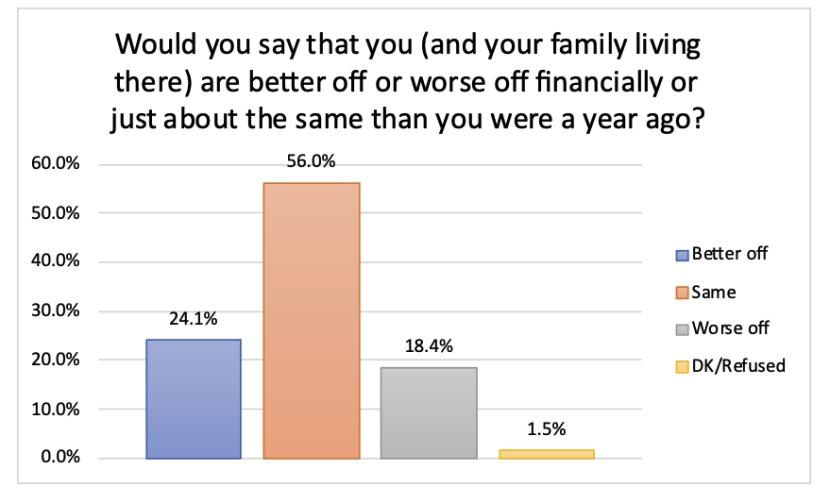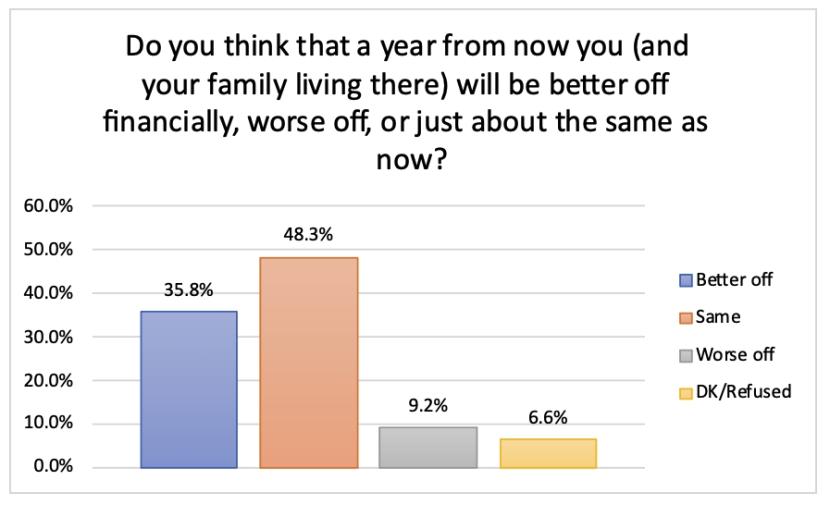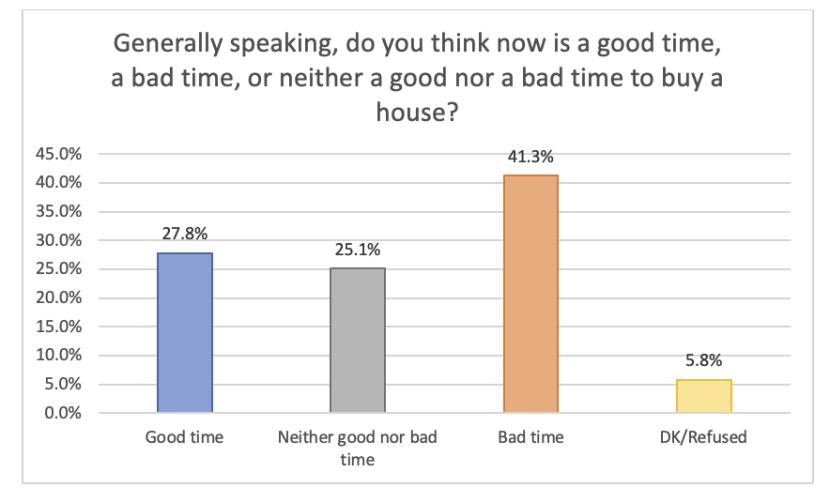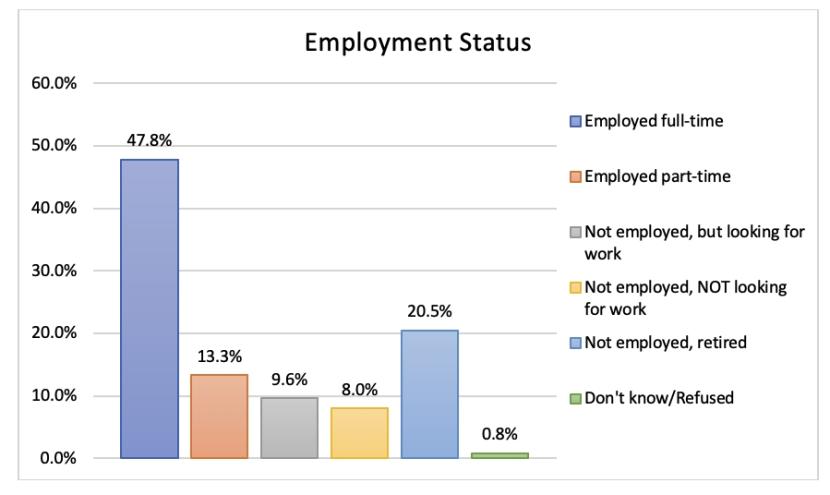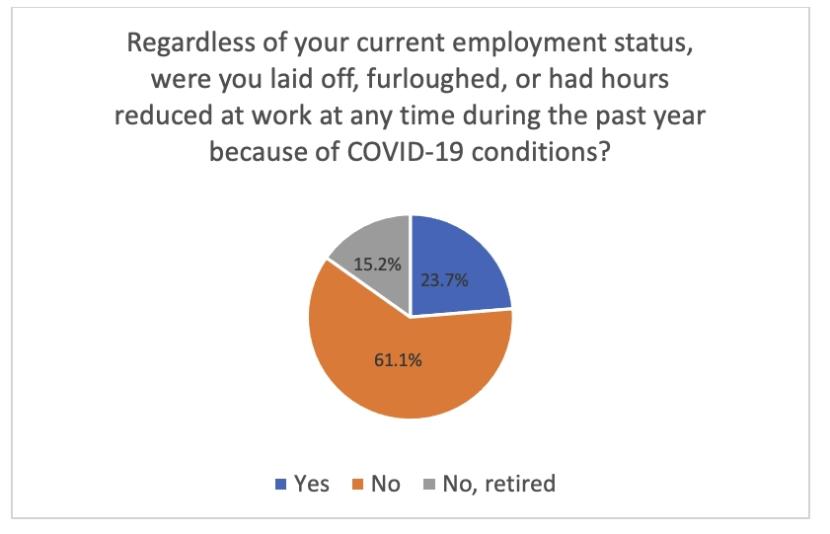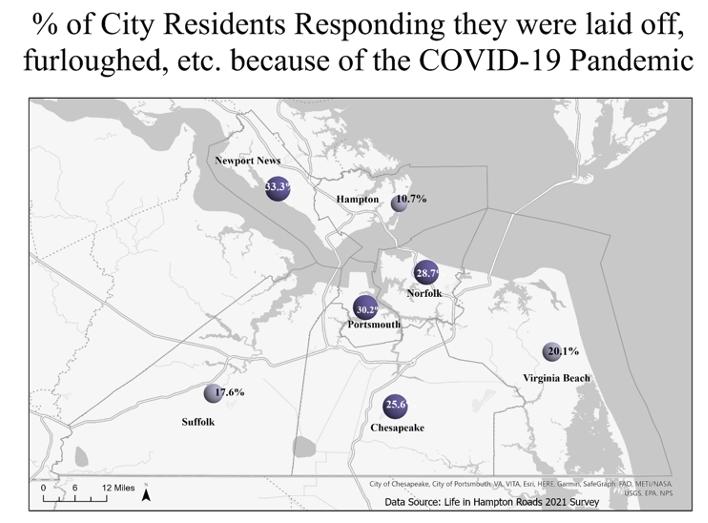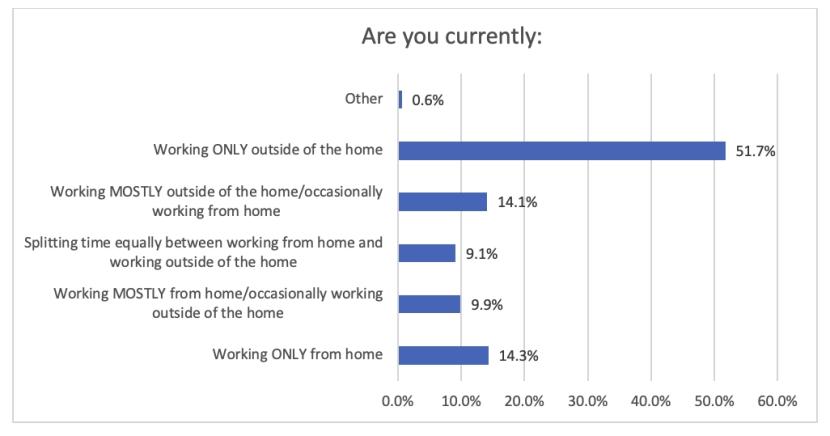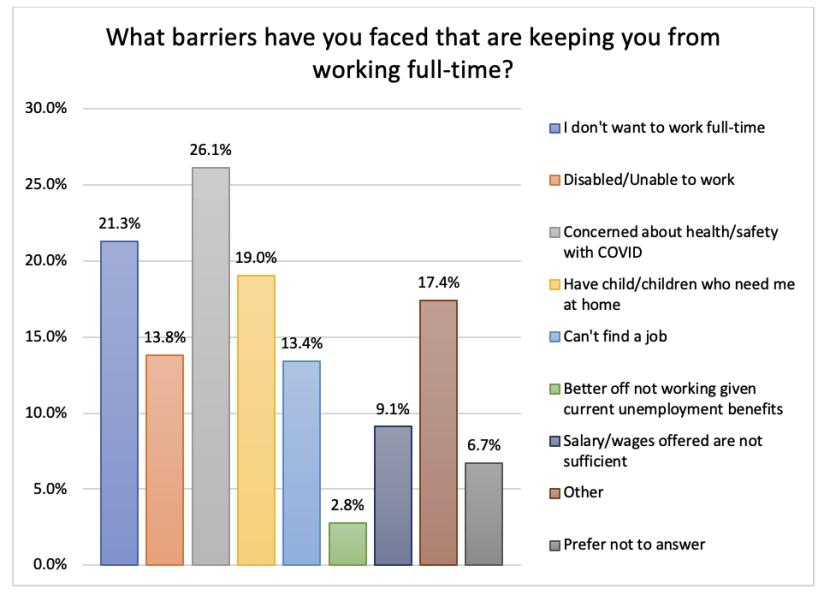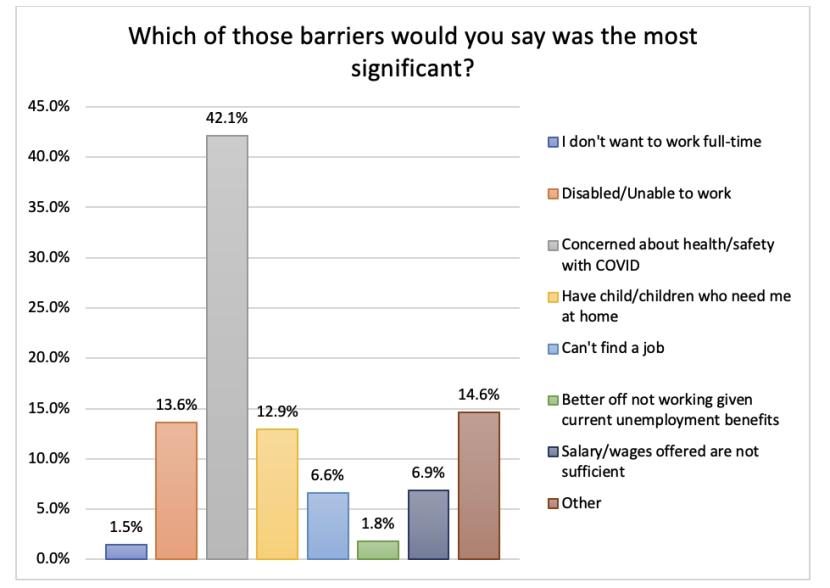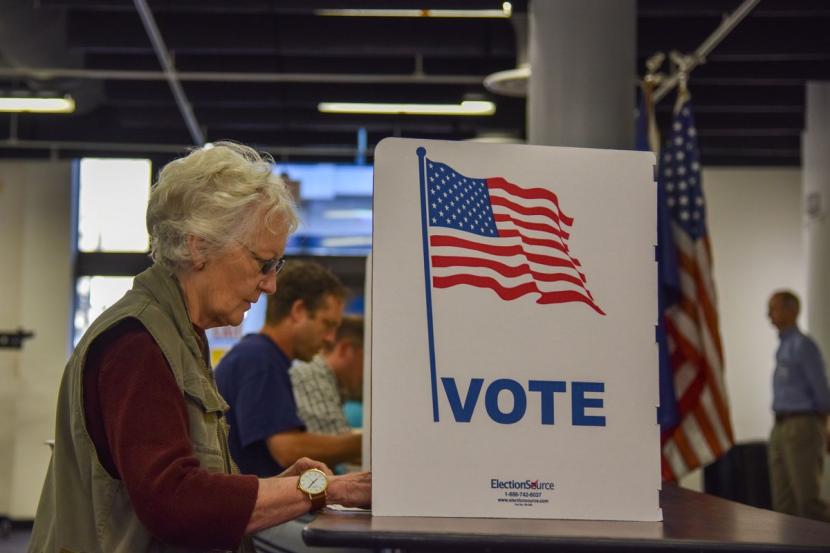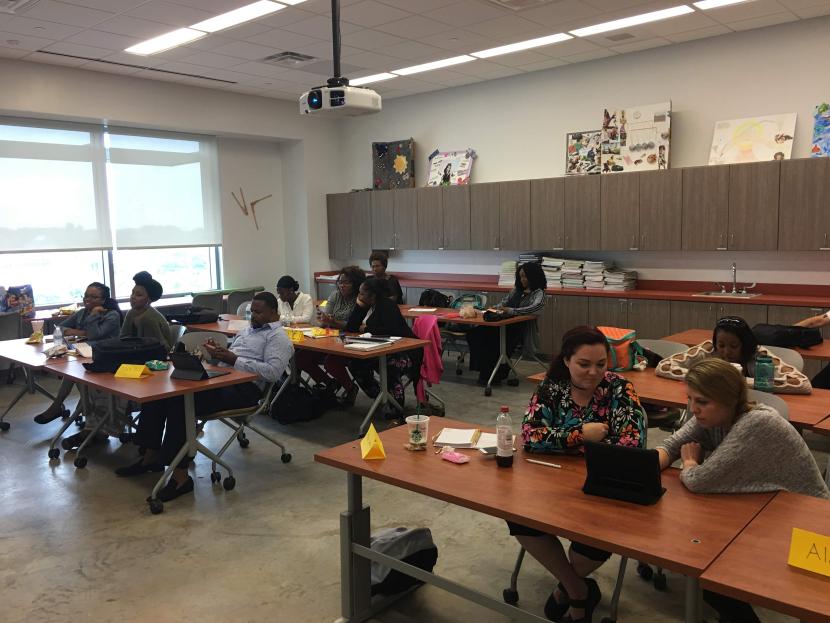Introduction
The Social Science Research Center (SSRC) at Old Dominion University recently completed data collection for the 12th annual Life in Hampton Roads (LIHR) survey. The purpose of the survey is to gain insight into residents' perceptions of the quality of life in Hampton Roads and the COVID-19 pandemic, as well as other topics of local interest such as perceptions of police, employment and other issues. A total of 796 online and telephone surveys were completed between July 12 and Oct. 3, 2021. It is important to note that the methodology this year differs from previous Life in Hampton Roads surveys. For several reasons, including continued concerns about COVID-19 and labor shortages, we conducted both telephone surveys and online panels. This change limits to some degree the ability to compare this year's results with those from previous years or to confidently generalize the results to the Hampton Roads population as a whole. Nonetheless, we note that an increasing number of surveys have moved online in recent years, and that in many instances useful data has been developed despite the challenges of online survey research. For more detailed information on the methodological changes and potential impacts please see the Methodology section in the full report, or please contact the SSRC directly.
Hampton Roads residents had mixed perceptions of the economy but showed some optimism about their own financial situation. Less than half (47.5%) of those surveyed rated the economic conditions in Hampton Roads as excellent (6.5%) or good (41%). More than four in 10 (41.4%) rated economic conditions as fair and 8% rated them as poor. Interestingly, despite the impacts of COVID-19, these ratings are not much different than in past years of the survey. In 2019, 49.9% of respondents rated economic conditions as good or excellent. This year's ratings are actually higher than in 2018 (45.3% rating excellent or good).
When asked if they and their family were better or worse off financially compared to a year ago, 24.1% reported that they were better off and 56.0% reported that they were about the same. About 18% indicated that they and their family were worse off. These numbers show a slightly more positive view of residents' financial standing compared to 2020 (22.8% thought they were better off and 52.9% thought they were about the same).
Respondents showed some optimism for the future, with 35.8% indicating that they think they and their family will be better off financially a year from now. Just under half (48.3%) think they will be the same and 9.2% think they will be worse off. Residents are perhaps hopeful that the worst of the financial impacts of COVID-19 will not be long-lasting.
The outlook for home purchasing, however, may be less optimistic, with 41.3% of respondents saying that now is a bad time to buy a house and only 27.8% think that it is a good time to buy. One in four (25.1%) think that it is neither a good nor bad time. This is a major shift from 2019 when 45.4% thought it was a good time to buy a house. These shifting sentiments perhaps reflect data showing a decrease in home listings (supply) and an increase in prices.
Employment & COVID-19
As can be seen from the graph below, less than half of those responding to this year's survey were employed full-time (47.8%) while another 13.3% were employed part-time. Just over 20% were retired. About one in 10 (9.6%) were not employed but looking for work while 8.0% were not employed and not looking for work.
Regardless of employment status, all respondents were asked if they were laid off, furloughed or had hours reduced at work at any time during the past year because of COVID-19 conditions. More than one in five respondents (23.7%) indicated that their employment had been impacted because of the pandemic.
A third of Newport News respondents reported that they had been laid off, furloughed or had hours reduced at work during the past year. More than one-quarter of respondents from Portsmouth (30.2%), Norfolk (28.7%) and Chesapeake (25.6%) also reported they had either been laid off, furloughed or had their hours reduced. The city of Hampton had the lowest percentage of respondents (10.7%) who reported being laid off, furloughed or had their hours reduced.
Respondents who indicated working full- or part-time were asked about their current working arrangement. More than half (51.7%) indicated that they were working only outside of the home. About 14% were working either mostly outside the home/working occasionally from home. About 9-10% reported splitting time equally between working from home and working outside the home or were working mostly from home/occasionally working outside the home. Another 14.3% reported working ONLY from home. These numbers reflect a partial shift back toward working away from home as pandemic restrictions eased. In the 2020 survey nearly three in 10 respondents (29.8%) reported working only from home, and an only slightly greater portion (33.2%) reported working only away from home.
Respondents who were working at least part-time were asked to rate their level of work burnout in their current, main job on a scale of 0 to 10 with 0 meaning "not feeling burned out at all" and 10 meaning "feeling completely burned out." The average score was 5.1, which was down slightly from 2020 (5.3). However, these burnout scores are both higher than the 2019 average of 4.2. Further, the percentage of those rating their burnout score as 10 almost doubled from 2019 (5.8%) to 2021 (10%). It is likely that the higher burnout levels in 2020 and 2021 reflect the increased stresses and challenges some respondents have experienced as a result of the pandemic.
Respondents who were not working full-time and not retired were asked about barriers that may be keeping them from working or working full-time. More than one in four cited concerns about health/safety due to COVID (26.1%), and 21.3% cited not wanting to work full-time. About one in five (19%) indicated that they had a child or children who need them at home, and 13.8% were disabled or unable to work. Just over 13% indicated that they could not find a job, and 9.1% indicated that the salary/wages offered were not sufficient.
Those respondents who indicated more than one barrier to full-time employment were asked which barrier was the most significant. About 42% cited concerns about health and safety due to COVID-19.
This data has important implications for labor market supply in Hampton Roads. The unemployment rate in Virginia was only 3.6% in Virginia in October 2021, and the labor force participation rate of 63% was well below pre-pandemic levels.As a result, employers in the state - as with employers nationwide - reported difficulties finding workers, and policymakers have struggled to find a solution. These survey results suggest that reduced concern about the COVID-19 pandemic would increase labor supply, followed by improvements to child-care availability.
The Life in Hampton Roads Data report and press releases will be placed on the Social Science Research Center website as they are released (http://www.odu.edu/al/centers/ssrc). Follow-up questions about the 2021 Life in Hampton Roads survey should be addressed to:
Tancy Vandecar-Burdin, Ph.D.
Director
The Social Science Research Center
Old Dominion University
757-683-3802 (office)
Related News Stories
Life in Hampton Roads Survey: Politics and Ethics in Government
Topics include President Biden's job performance, last year's gubernatorial race, casinos and decriminalizing marijuana. (More)
Life in Hampton Roads Survey: Health and Experiences with COVID and Vaccines
ODU's Social Science Research Center asked residents about their health in general, the pandemic and feelings about vaccines. (More)
Life in Hampton Roads Survey: Education & Public Schools
Among parents with school-age children, 60% of respondents said the quality of education their children received was much worse or a bit worse than before the pandemic. (More)




